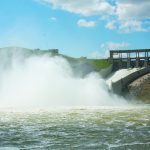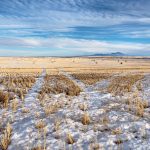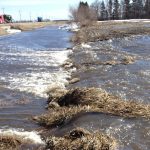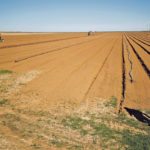A researcher says many sector players are involved in water management issues but they are often poorly connected
Many players are involved in water issues and water management, but they are often poorly connected. Irrigation authorities, municipal governments, Indigenous, provincial and federal authorities, industries and communities grapple with water issues. With Canada’s enormous supplies of fresh water, conflicts have not been as intense as in other parts of the world, for now.Tag Archives water

Gene family stimulates longer wheat roots
Scientists at the University of California, Davis, have discovered that the right number of copies of a specific group of genes called OPRlll can stimulate longer wheat root growth, offering opportunities for farmers to grow healthier crops with greater yields, despite climate variables.

Soil erosion causes problems on irrigated land
Five-year research project will test practices that improve crop production systems in areas such as southern Alberta
Soil erosion is affecting some of the most expensive land in the province, with farmers permanently losing soil in a day that took hundreds, if not thousands, of years to build up, said Ken Coles, executive director of Farming Smarter.
Irrigation expansion not a good idea
Irrigation expansion in the context of a declining supply of water lies on the razor’s edge between optimism and delusion, between audacity and foolishness and between imagination and flimflammery.

Water shortage advisories in Alta.
A cooler spring and below average snowpack have set the stage for slower-than-normal mountain runoff
A cooler than normal spring coupled with a below average mountain snowpack has added to problems across the southern Alberta irrigation network.
New national water agency called similar to former PFRA
Water is often a divisive issue within provinces and between provinces, states and regions. Upstream and downstream interests are often involved in tense management situations.

Moisture conservation starts in the field
There are steps grain growers can take to increase water availability, says researcher and long-time wheat breeder Ron DePauw.

Canada Water Agency to be located in Winnipeg
If you’re looking to locate ground zero for water issues on a map of Canada, just stick a pin a few kilometres east of Winnipeg. From frequent major flooding on two major rivers to the polluting of the seventh largest freshwater lake in the world, to farmers’ struggles with saturation and drought, to chronic problems […] Read more

Water-efficient Israel has lessons for Canada
The country, which is 60 percent desert, can grow 85 percent of its food on 555,6000 acres of irrigated land
If Canadians had to pay the full cost of water — its collection, sanitation, delivery and recycling — what would that mean? Big bills, certainly, but it might also mean they would use less than the 300 cubic metres per person that they now average. Terrence Lazarus, general manager of the St. Mary River Irrigation […] Read more
Researchers focus on new water challenges
Canada’s farmers have a love-hate relationship with water. They pray for it when there’s not enough and they curse it when there’s too much. But regardless of whether it’s too scarce or too abundant, every farmer knows he can’t live without it. That’s one of the reasons why the University of Saskatchewan — located in […] Read more






